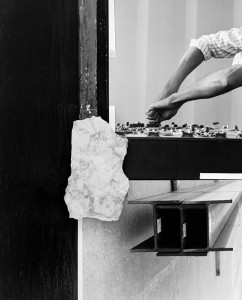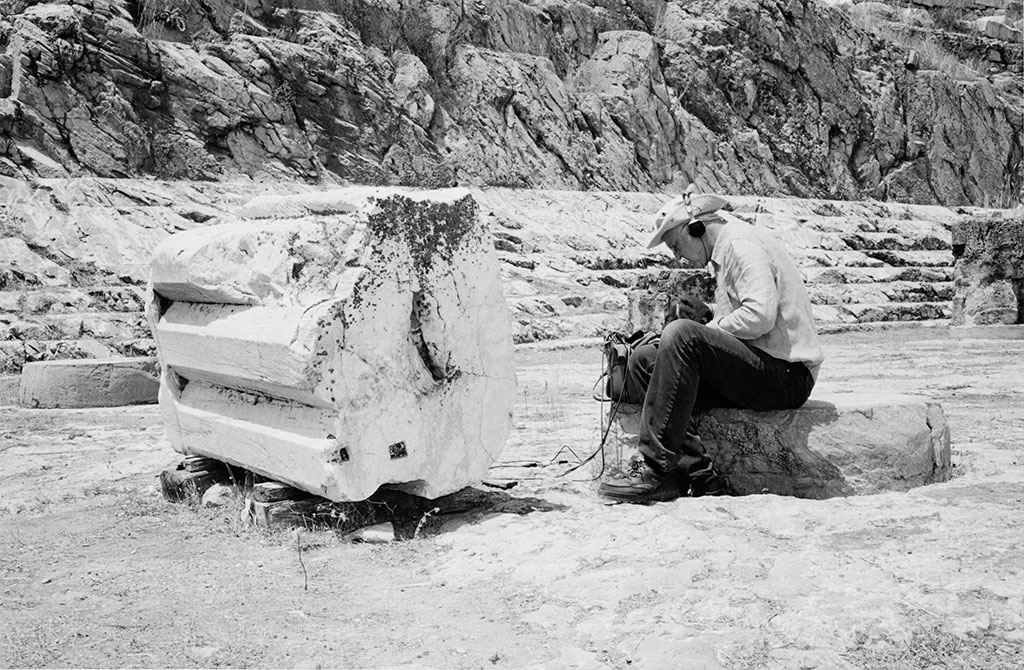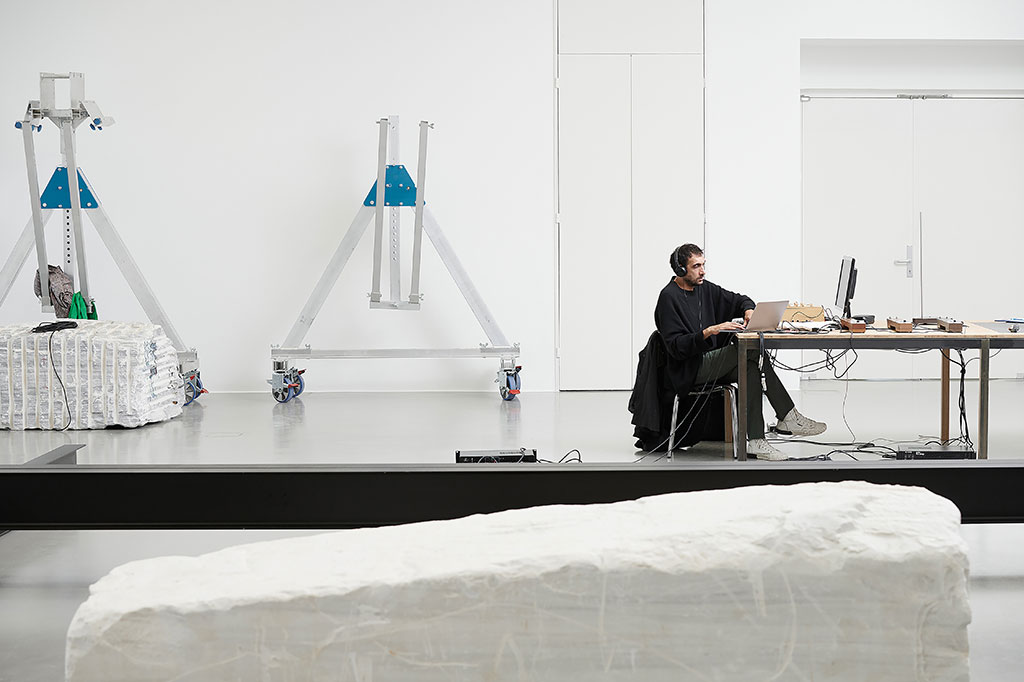ART-PRESENTATION: Tarek Atoui-Waters’ Witness,Part II
 Tarek Atoui comprehensively exploits the potential of sound art, which lies at the heart of his practice. He is not only interested in how audio events or sounds develop an acoustic effect. Equally important to him is how these phenomena can be perceived with sensory organs other than the ear, how they act as a catalyst for human interaction, and how they relate to social, historical, or spatial parameters. The point of departure for his works is usually comprehensive anthropological, ethnological, musicological, or technical research,
Tarek Atoui comprehensively exploits the potential of sound art, which lies at the heart of his practice. He is not only interested in how audio events or sounds develop an acoustic effect. Equally important to him is how these phenomena can be perceived with sensory organs other than the ear, how they act as a catalyst for human interaction, and how they relate to social, historical, or spatial parameters. The point of departure for his works is usually comprehensive anthropological, ethnological, musicological, or technical research,
which results in the realization of instruments, listening rooms, performances, or workshops, thus constituting an exceptionally multifaceted oeuvre (Part I).
By Dimitris Lempesis
Photo: Fridericianum Archive

Tarek Atoui’s first solo exhibition in Germany has the title “Waters’ Witness” and is based in his ongoing project “I/E”, where the artist has been researching and documenting the sounds of ports in Athens, Abu Dhabi, Singapore, Porto, and Beirut since 2015, processing and transforming these recordings into works. Previously separate components of this project are brought together in Fridericianum, where audio recordings from the harbors of Athens and Abu Dhabi are combined with materials (marble blocks and steel girders) gathered from each site to form a single unit with the surrounding space. In “Waters’ Witness”, space, sound, and objects become physically and sensorially perceptible, creating a basis for multi-layered associations, memories, and (self) reflections. The installation is complemented by “The Tables of Contents” (2020). In this work, presented to the public for the first time, the central themes of participation, education, and experimentation in Atoui’s work are clearly articulated. Here, two apparatuses in the form of tables, as indicated by the title, are equipped with various objects that can be operated, including pottery discs, metal pins, and springs, as well as specially constructed instruments. Under guidance, visitors can use these objects to actively generate new sounds and modify existing ones. These sounds then flow into the exhibition, becoming part of the installation and inspiring new contributions and interventions. On “The Duofluctus” (2019) an alternating magnetic field generated by four small magnets causes the two strings above it to oscillate. The pitch of these strings changes with the magnets’ varying speeds of rotation. The “Trichord” (2017) was developed for “WITHIN”, a project generated by Atoui’s research into how the Deaf perceive and understand sound. When “Trichord” is plucked or touched, a feedback phenomenon occurs between its wooden body and strings, causing the instrument to resonate continuously. “Disharmonica” (2019) is a pocket, six-voice electronic harmonica that can be “acoustically” played. It is connected to six small buzzers, and when amplified by these, “Disharmonica” becomes a performative electroacoustic synthesizer, whose sound grows richer when charged by a poor-quality power supply. “Sub-ink” (2016-19) is a modular instrument that deals with the tactility of sound. The player activates the instrument’s bass synthesizer by touching an ink drawing they have previously prepared. Through “Sub-ink”, Atoui is able to engage a multiplicity of Deaf and hearing audiences and performers. When “Piezothing” (2019) is placed against a solid surface, the feedback from its contact microphone and speaker allows us to hear the resonating frequency of the object it is connected to. “Piezothing” can be considered as a sound microscope that reveals the hidden frequencies and acoustic properties of the things it touches. In “Rotator” (2019) a magnet spins at variable speeds in front of three coil microphones, generating an electric pulse each time it passes near one of the mics. This creates deep bass pulses that Atoui uses to animate architecture or trigger other instruments in sonic-electric chain reactions. Serge Durin carefully selects a volcanic stone from the middle of France. He then finds the stone’s center of gravity and makes three holes that allow it to rest on small wooden pillars, which gives “Litophone” (2019) a bright, resonant sound when struck. The instrument can be played by rubbing smaller stones against its surface, and sounds best with a specific set of sticks, mallets, and percussion tools made from cow bone. “I/E Abu Dhabi” (2017) is a playback device for sounds recorded in and around Abu Dhabi’s harbors. It is also a processing unit, taking the sound from an input, such as an instrument or microphone, and encapsulating it in the recorded sounds of the harbors. “I/E Abu Dhabi” creates a mise-en-scène, where any sound injected into it becomes a detail enmeshed in Abu Dhabi’s soundscapes. “I/E Elefsis” (2015) is a playback device for sounds recorded in and around Elefsina’s harbors. It also functions as a processing unit, taking the sound from an input, such as an instrument or microphone, and reverberating it through the recordings’ acoustic print. “I/E Elefsis” acts like an echo chamber, where any sound injected into it resonates as if it were occurring in the water, archeological sites, or abandoned factories of Elefsina. “Tables of Contents” (2020) are surfaces that explore active principles in Atoui’s work, particularly the idea that music should be practiced with a variety of audiences. Elements from other projects by the artist reoccur, such as the propagation of sound through tactility from “WITHIN”, rotation and cyclicality from “Ground”, interconnections from “Wave”, and recordings from “I/E”. These are brought together to create work surfaces that allow players to explore ideas around sound in relation to objects, listening, and performing. With the possibility of being used by up to eight people at a time, these surfaces can be considered educational tools for experimentation, workshops, and performances that can take place with a variety of participants and audiences, from amateurs to professionals.
Info: Fridericianum, Friedrichsplatz 18, Kassel, Duration: 3/10/2020-17/1/2021, Days & Hours: Tue-Wed & Fri-Sun 11:00-18:00, Thu 11:00-20;00, https://fridericianum.org




